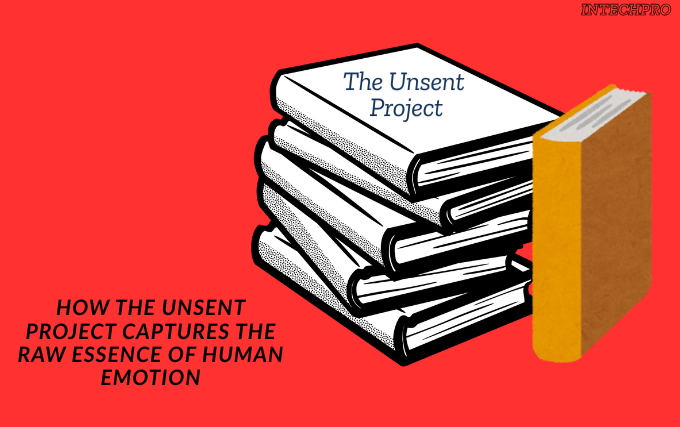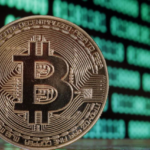In an age where digital communication dominates, The Unsent Project has emerged as a groundbreaking platform that channels human vulnerability and emotional honesty. Created by artist Rora Blue in 2015, The Unsent Project is a collective archive of anonymous, unsent text messages addressed to past lovers, crushes, or significant individuals. With hundreds of thousands of submissions from around the world, the project has evolved into a raw, unfiltered mosaic of human emotion.
At its core, The Unsent Project offers a space where people can express what was left unsaid—those lingering words, confessions, and sentiments that, for various reasons, were never communicated. It is a powerful exploration of love, heartbreak, longing, regret, and hope. Through anonymity, contributors are liberated from judgment, allowing for complete emotional transparency.
The Origins and Evolution of The Unsent Project
Rora Blue initially started The Unsent Project as a visual art experiment. Each submission asked one simple question: “What would you say to your first love if you could text them?” The responses were color-coded based on the sender’s perception of the emotion or memory associated with the person. This creative decision highlighted the emotional undertone of each message, giving the archive a multi-sensory quality.
Over time, the project grew from a small Tumblr page into a viral digital phenomenon. Thousands of messages began pouring in daily, transforming it into an ever-expanding public diary. With the advent of its official website, search functionality, and an Instagram presence, The Unsent Project has cemented itself as an enduring fixture in contemporary digital art and emotional storytelling.
A Safe Space for Emotional Catharsis
One of the primary reasons for The Unsent Project’s success is its ability to serve as a therapeutic outlet. Many contributors submit messages they would never dare say in real life. These confessions often revolve around heartbreak, unspoken affection, unresolved conflicts, or expressions of grief.
By providing a platform where emotions can be released without consequence, the project becomes a form of emotional catharsis. This therapeutic release helps individuals process their experiences, find closure, and sometimes even connect with others who have felt similarly.
For many, the act of writing and submitting an unsent message becomes a pivotal moment in their emotional healing journey. The anonymity offers a sense of liberation—there’s no pressure to be articulate, polished, or even rational. Just honest.
The Role of Color in Emotional Expression
A distinctive feature of The Unsent Project is the use of color to categorize emotions. Contributors select a color that best represents their emotional state or their association with the person to whom the message is addressed. These colors create a powerful emotional spectrum—blue often signifies sadness or nostalgia, red may indicate passion or anger, while pink can reflect affection or tenderness.
This color-coded system adds a visual dimension to the emotional narrative, making it possible to not only read emotions but also see them. It transforms words into visual art, enhancing the sensory experience for viewers and helping them engage more deeply with the content.
Universal Themes That Resonate
Despite the uniqueness of each submission, recurring themes emerge throughout The Unsent Project. These include love unfulfilled, missed opportunities, betrayal, apology, longing, and personal growth. Such themes strike a chord with readers from diverse cultural and personal backgrounds.
The messages are often short—sometimes only a sentence—but they are deeply evocative. They convey universal emotions that transcend language and cultural barriers. This universality is a key reason the project has resonated with such a broad audience. Regardless of age, gender, nationality, or background, most people can relate to the experience of wishing they had said something they never did.
Art, Technology, and Emotional Memory
The Unsent Project represents the convergence of art, technology, and emotion. In a digital age where text messages are a primary form of communication, the project transforms these ephemeral interactions into lasting artifacts of emotional memory.
Unlike traditional love letters or face-to-face conversations, text messages are often impulsive, immediate, and emotionally charged. By archiving these messages, The Unsent Project immortalizes moments that might otherwise vanish in a deleted chat log or an unsent draft.
This shift reflects a broader trend in digital culture where emotional expression is increasingly mediated through screens. The project critiques and celebrates this phenomenon, reminding us that even our most fleeting digital thoughts carry weight and meaning.
Impact on Mental Health and Social Connection
The Unsent Project has not only become a creative outlet but also a source of comfort and solidarity for many. By reading others’ messages, visitors often realize that their own struggles are not unique. This sense of shared experience fosters empathy and connection, reducing feelings of isolation and emotional alienation.
Mental health professionals and therapists have even referenced the project as a reflective tool. Some encourage clients to write their own “unsent messages” as a therapeutic exercise. The project validates the idea that feelings—especially those we hide—deserve acknowledgment.
In an era marked by increasing mental health awareness, The Unsent Project plays an important role in promoting emotional expression. It invites people to confront their emotions honestly, without fear of judgment.
Digital Intimacy and Anonymity
The project also underscores the paradox of digital intimacy—how technology can both connect and isolate us. While social media often encourages curated versions of life, The Unsent Project cuts through this facade. It’s a rare corner of the internet where vulnerability isn’t punished but embraced.
Anonymity is a crucial element here. Without names, identities, or direct consequences, contributors can explore parts of themselves that remain hidden in real life. This form of digital intimacy is deeply personal, and paradoxically, it can lead to collective healing.
Cultural Relevance and Lasting Legacy
As society continues to grapple with the implications of digital communication, The Unsent Project remains relevant. It captures the cultural shift in how we express emotions, document relationships, and seek closure. In doing so, it preserves the human experience in all its complexity.
The project’s influence extends into literature, art, film, and academic studies. It has inspired countless other platforms and movements centered on anonymous expression, storytelling, and emotional honesty.
What began as a simple art experiment has become a digital museum of modern love and loss—one that future generations may look back on to understand how we lived, loved, and felt in the 21st century.
Conclusion
The Unsent Project is more than an archive of unspoken words—it’s a mirror reflecting our deepest truths. By capturing the essence of what was never said, it reveals who we are when no one is watching. It gives weight to emotions we often bury and invites us to honor them.
In a world that frequently encourages emotional suppression, The Unsent Project creates a sacred space for the opposite: radical honesty. Whether you’re reading, writing, or just exploring, it reminds us all of one profound truth—our feelings matter, even if the words remain unsent.


